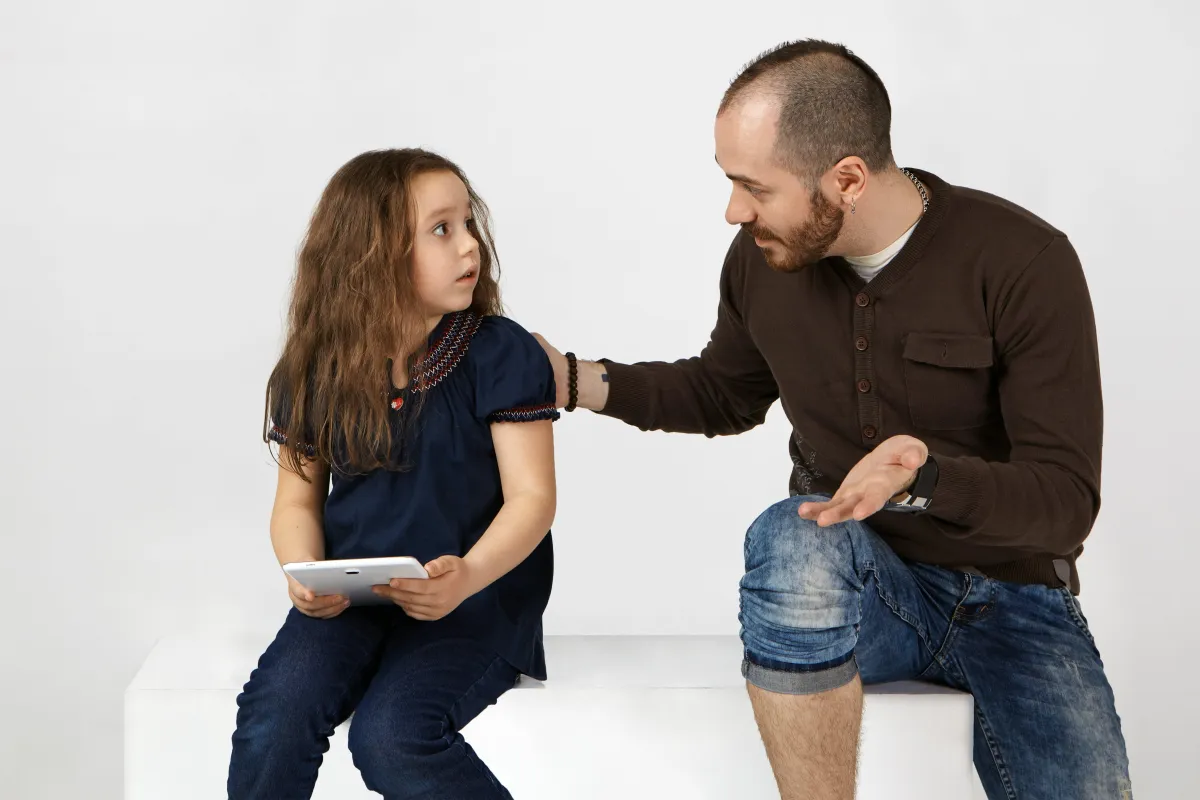What to Do When Your Spouse Leaves You: Immediate Steps to Regain Clarity and Control

Introduction
One minute, life feels steady—then suddenly, you're staring at an empty space where your spouse used to be. Maybe it came out of nowhere. Maybe the tension had been building, but you didn’t think it would come to this. Either way, you’re here now. Shocked. Abandoned. Numb. Hurt. Confused.
If your spouse left you unexpectedly, you’re not alone—and more importantly, you’re not broken. Whether you're thinking “What did I do wrong?” or “How do I even begin to cope?”—it’s okay not to have the answers right away.
This guide isn’t about rushing your healing. It’s about getting you through today. You’ll find:
Immediate grounding techniques
Practical next steps for emotional and financial stability
Validation for the raw emotions you’re experiencing
Guidance on what to do—and what not to do—right now
You don’t have to “move on.” You just have to make it through this moment. Let’s start there.
The First 24–72 Hours: Stabilizing Yourself
Let Yourself Feel — Without Judgment
Your world just cracked open. That aching tightness in your chest? Normal. The tears that won’t stop—or won’t come at all? Also normal.
Whether you’re screaming into a pillow or staring blankly at the wall, you’re not doing this wrong. This is grief in real-time.
Try:
Crying without self-shaming
Journaling what you can’t say out loud
Sitting in silence and just breathing
You don’t have to be strong right now. You just have to be real.
Avoid Reactive Decisions (e.g., legal threats, rage texts)
The urge to text them “How could you?” or fire off a scorched-earth post on Instagram can be overwhelming. But reaction is not the same as relief.
Avoid:
Drunk texting
Showing up at their workplace or new place
Airing your pain on social media
Instead, try this calming breathe box technique:
Inhale for 4 seconds → Hold for 4 → Exhale for 4 → Pause for 4 (Repeat 4 times)
You deserve peace—even if it takes practice.
Practical First Steps You Need to Take
Assess Immediate Needs
Start by checking your basic safety and logistics. Ask yourself:
Do I feel physically safe?
Do I have access to food, shelter, and transportation?
Do I need to stay with someone temporarily?
If there are children involved, make sure their needs are accounted for too, but don’t try to solve everything at once.
Tell Someone You Trust
You don’t have to go through this in isolation. Choose one friend or family member to confide in—even just to say, “I don’t know what to do.”
Ask them for:
A listening ear
Help with small things (meals, rides, child care)
Gentle check-ins over the next few days
You need an emotional witness—someone who sees your pain and stays.
Secure Legal & Financial Documents (Without Confrontation)
Even if you’re hoping for reconciliation, it’s smart to quietly safeguard yourself:
Make copies of bank records, tax returns, and joint bills
Secure your ID, passwords, and health insurance documents
Save contact info for your children’s doctors or schools
E-A-T Tip: Contact a licensed family attorney to understand your rights, even if you don’t take action yet. Avoid confrontational or DIY legal moves.
Stat: Over 60% of divorces are initiated by one partner without clear warning (source: AAMFT)
Emotional Reactions You Might Be Feeling
Shock and Disbelief
Your brain may refuse to register what just happened. You might find yourself checking your phone obsessively or replaying your last conversation over and over.
This is trauma-induced confusion, and it’s normal.
Shame and Self-Blame
You might catch yourself thinking:
“What did I do wrong?”
“I wasn’t enough.”
“Maybe I deserve this.”
Please hear this: Being left does not mean you failed. People leave for their own reasons—and often, those reasons have nothing to do with your worth.
Anger or Begging for Reconciliation
Wanting to scream or beg them to come back doesn’t make you weak. But acting on that impulse—especially in the early days—can lead to regret or deepen your pain.
This is often part of a trauma bond, where the pain and attachment get tangled.
"You can love someone and still need to let them go." — Vikki Stark, therapist & author of Runaway Husbands
What You Should NOT Do Right Now
Don’t Chase or Beg
Desperation often pushes people further away. It also damages your self-respect in the long term.
Instead of chasing, redirect that energy toward stabilizing yourself.
Don’t Spiral into Self-Destruction
Using alcohol, impulsive hookups, or vengeful social posts to numb the pain only delays it—and often makes it worse.
Avoid these traps:
Late-night doom scrolling their socials
Venting online where your kids or employer can see
Risky behavior to “feel something”
What you’re feeling is valid—but let it out in safe ways.
What You CAN Do to Start Coping
Begin Journaling or Voice Notes
Grab your phone or a notebook and let your pain speak.
Write:
“I feel abandoned because…”
“Today, I wish I could say to them…”
“Right now, I need…”
No one ever has to read this. It’s for you, not them.
Create a “Stabilize Me” Daily Routine
When your life is upside down, structure can help you stand upright.
Try this simple routine:
Wake up and shower by 9 AM
Make one healthy meal per day
Take a short walk, even just around the block
Hydrate (yes, water counts as self-care)
These small rituals aren’t solutions, but they’re the first bricks in your rebuild.
Join a Divorce Support Group
Being surrounded by others who “get it” can be life-saving. You’ll hear:
“Me too.”
“You’re not crazy.”
“You’re not alone.”
Try:
Local meetups via Rebuilders
Rebuilders offers a life changing support group that meets weekly and has helped countless people get started. Click here to learn more
One of our 10-week Online programs. New classes start every few weeks.
When to Seek Professional Help
Signs You Need Emotional Intervention
Please seek immediate help if you experience:
Insomnia or nightmares for more than a week
Panic attacks or heart palpitations
Suicidal thoughts
Total inability to eat, speak, or get out of bed
Pain is part of this—but suffering in silence shouldn’t be.
The Role of Therapists or Divorce Coaches
Therapists don’t just listen. They:
Help you reframe distorted thoughts
Guide you through emotional triage
Give you tools to set boundaries and build resilience
Closing Thoughts: You’re Not Broken — You’re Human
Your spouse leaving doesn’t define your worth. It doesn’t erase your value. And it doesn’t mean you’re unlovable.
You didn’t fail. They left. That’s not the same thing.
Right now, survival is enough. Later, you’ll rebuild. You’ll redefine. You’ll rise.
And when that time comes, you won’t just be healed—you’ll be stronger, wiser, and whole.
Related Posts

Helping Kids Adjust to a New Normal After Divorce
Divorce turns your kids’ world upside down—new routines, two homes, and feelings they can’t quite name. As a parent, you might try to smooth it over with extra hugs or packed schedules, but that’s not enough. At Rebuilders International, we’ve spent over 40 years helping families find their footing with our proven approach, backed by the Fisher Divorce Adjustment Scale (FDAS). This isn’t about fixing your kids—it’s about guiding them to feel safe in a new normal. Here’s how to start today.
Why Kids Struggle with Change
Divorce doesn’t just shift your kids’ address—it shakes their sense of security. They pick up on your stress, miss the old rhythms, and worry they’re to blame. People might say, “They’re resilient,” but our method, tested by thousands, shows kids need active support to process change. The FDAS, with its .93 reliability, proves that helping them name and release emotions builds trust and stability. Let’s explore how you can make that happen.
5 Rebuilders Steps to Support Your Kids
These steps, drawn from our 10-week workshop, adapt our tools to help kids adjust, rooted in connection and emotional clarity:
Listen to Their Heart
Kids often hide big feelings, thinking you can’t handle them. Our Empowerment Triangle—caring, vulnerability, assertiveness—teaches you to ask, “What’s one thing you’re feeling today?” A 10-year-old in our groups once said, “I’m scared you’ll leave too,” and it opened a door. Try it: listen without jumping to fix. It’s like our grief work, helping kids feel heard.Teach “I Am Enough”
Divorce can make kids feel they caused the split. Our core belief? They’re a “gem,” whole as they are. Try this: each night, say together, “I am enough.” A mom in our support group said her son’s frowns turned to grins over weeks. This practice, tied to our self-worth tools, helps kids feel steady, no matter the changes.Check Your Own Progress
Your emotional clarity helps your kids. Our free self-test takes 10 minutes and shows where you’re at—maybe stuck in grief or low on trust. A dad saw his scores and said, “I need to heal to help them.” Knowing this, like our RIFT framework’s thinking phase, lets you model strength for your kids.Create One Shared Anchor
Kids crave consistency. Pick one small ritual—like a bedtime story or a weekly pancake morning—and keep it steady, even across homes. Our program’s challenge behaviors show action builds security. A client said her daughter clung to their “joke of the day” like a lifeline. Choose one thing you can both count on—it’s a bridge to their new normal.Join Our Community
Parenting post-divorce feels lonely, but our online groups connect you with others tackling the same questions—like how to answer, “Why’d you split?” One parent learned to say, “We’re still your team, just apart,” easing her kid’s fears. Share tips, find support, and show your kids you’re not alone. Our tools make connection a family strength.
A New Normal They Can Trust
Helping kids adjust to a new normal after divorce is about building a world where they feel safe, not erasing what was. Our structured approach has guided thousands since 1974, with workshop completers since 2021 showing stronger family bonds via FDAS scores. You and your kids can find that stability too, one real moment at a time.
Need Support? We’re Here
This journey’s tough, but our programs—online, in-person, or self-paced—give you tools and a community to lean on. Visit our homepage or book a free clarity call. Want to start light? Join our free support group Tuesdays online.
You’re Their Guide—You’ve Got This
Your kids are watching you for cues. What’s one way you’ll help them feel safe today? Drop it below—we’re here for you!

